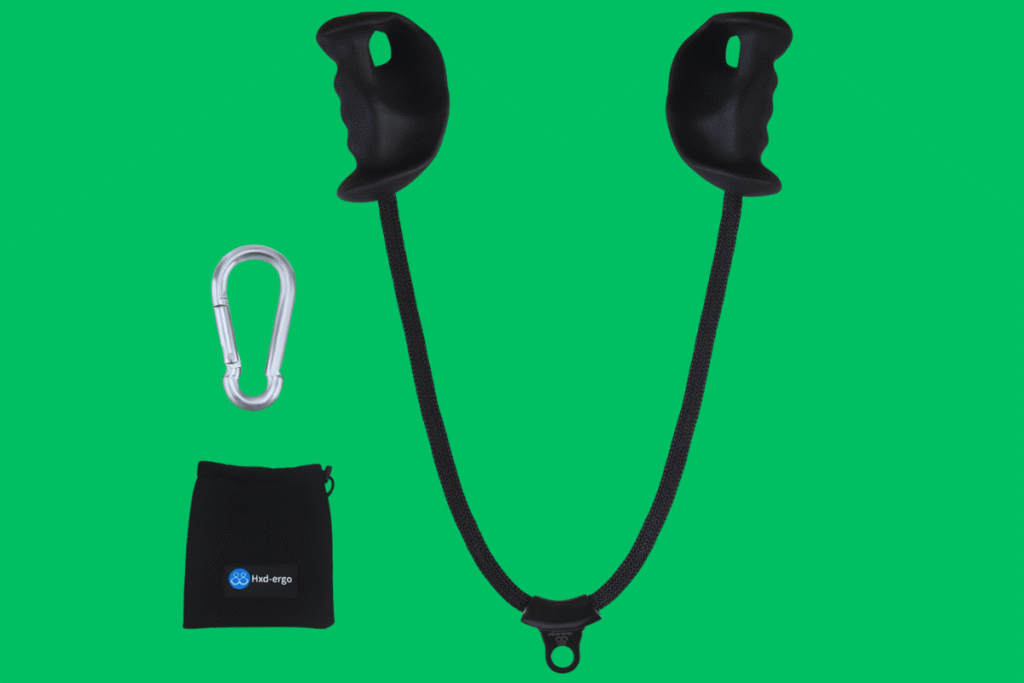Biceps are one of the most sought-after muscles for many fitness enthusiasts, but growing them can sometimes feel challenging. While they are a smaller muscle group compared to others, like the legs or back, biceps still require consistent effort, the right exercises, and proper recovery to grow. Many people wonder if biceps are hard to develop, and the answer is both yes and no. While it’s true that biceps can be tricky to grow for some, it’s largely due to factors like incorrect training, inadequate nutrition, or insufficient rest.
The key to growing your biceps lies in a well-balanced workout routine, focusing on both isolation exercises like curls and compound movements like pull-ups or rows. Progressive overload—gradually increasing weight or reps—is also essential for muscle growth. Additionally, proper nutrition, especially adequate protein intake, and enough rest are vital to seeing progress.
This article will discuss the impact of bicep growth, highlight common mistakes, and provide tips on how to train your biceps effectively. With the right approach, anyone can see significant improvement in their arm size and strength. So, let’s dive in and explore how to make bicep growth easier and more efficient.
Why Biceps May Be Hard to Grow?
Growing biceps can be challenging for several reasons, and understanding these factors is key to overcoming the obstacles. Here are a few reasons why biceps may be hard to grow:
Small Muscle Group
The biceps are a relatively small muscle group compared to larger muscles like the chest, legs, or back. Because of their size, they can fatigue quickly and might need more focus and variety to stimulate growth effectively.
Genetics
Genetics plays a role in how easily you can grow certain muscles. Some people naturally have a higher percentage of muscle fibers that grow faster or more efficiently. Additionally, the shape and insertion points of the biceps can vary from person to person, affecting how they develop.
Overtraining or Undertraining
Training the biceps too often without proper recovery can lead to overtraining, which hampers growth and increases the risk of injury. On the other hand, not training them enough or not increasing the intensity of your workouts can slow progress.
Neglecting Compound Movements
Many people focus solely on isolation exercises like curls and neglect compound movements like pull-ups and rows. These exercises engage the biceps while also targeting other muscle groups, which leads to more overall arm development.
Poor Nutrition
Without proper nutrition, especially an adequate amount of protein, the muscles won’t have the necessary fuel to grow. Nutrition is essential for muscle recovery and growth, so not fueling your body properly can limit progress.
Lack of Progressive Overload
Muscles grow through progressive overload, which means you must gradually increase the weight or repetitions to challenge the muscles. If you’re consistently using the same weight or rep range, your biceps will adapt and growth will plateau.
Improper Form
Using incorrect form during exercises can reduce the effectiveness of your workouts and lead to injuries. Focusing on strict form ensures the right muscles are being targeted, maximizing muscle activation and growth.
By addressing these factors, you can improve your bicep growth and make more consistent progress over time.
Essential Exercises for Bicep Growth
To effectively grow your biceps, you need to perform targeted exercises. Bicep curls (using dumbbells or barbells) are the most common exercise, but variations like hammer curls and concentration curls can help engage the muscles differently. Pull-ups and chin-ups are also great compound exercises that help work the biceps along with the back.
It’s essential to include compound exercises in your routine, like rows and deadlifts, that also recruit the biceps as secondary muscles. This helps in overall arm development.
Progressive Overload
Bicep growth, like any muscle growth, requires progressive overload. This means you need to gradually increase the weight or resistance to continue challenging your muscles. Without increasing the difficulty of your exercises, your biceps will stop growing. However, it’s important to maintain good form when increasing weight to avoid injury.
Nutrition for Bicep Growth

Your diet plays a major role in muscle development. For your biceps to grow, you need to consume enough protein to repair and build muscle. Aim for a balanced diet that includes lean protein sources like chicken, fish, or plant-based protein, along with healthy fats and carbohydrates. Hydration is also key, as it helps with muscle function and recovery.
Rest and Recovery

Many people underestimate the importance of rest. Overworking the biceps without adequate recovery time can lead to overtraining and reduced growth. Muscles grow when they are at rest, not during the workout. Ensure that you allow at least 48 hours of rest between training sessions for the same muscle group.
Genetics and Bicep Growth
Genetics can also play a role in how quickly and easily you build muscle. Some people may find it easier to grow their biceps due to their natural muscle fiber composition or the way their muscles are structured. However, even if genetics aren’t on your side, consistency, effort, and the right techniques can still lead to significant improvement.
Common Mistakes When Training Biceps

When it comes to building bigger, stronger biceps, many people make common mistakes. It can effect their progress. Here are some of the most frequent errors to avoid:
Using Poor Form
One of the biggest mistakes is not using proper form during bicep exercises. Swinging the weights or using momentum instead of controlled movements reduces the effectiveness of the exercise and can lead to injury. Always focus on slow, controlled movements to properly engage the biceps and maximize results.
Overtraining the Biceps
Many people think that more is better, but overtraining the biceps can actually stunt growth. Your muscles need time to rest and recover in order to grow. Avoid working the same muscle group every day, and allow at least 48 hours of rest between sessions targeting the biceps.
Neglecting Triceps and Other Muscle Groups
Focusing only on biceps can lead to muscle imbalances. To achieve balanced arm development, it’s essential to also train your triceps and forearms. Compound exercises like push-ups and overhead presses can help work these muscles alongside the biceps, promoting overall arm strength and size.
Lifting Too Heavy
Lifting weights that are too heavy can compromise your form and lead to injury. Instead, choose a weight that allows you to complete the movement with proper form while still challenging your muscles. Gradually increase the weight as you build strength.
Not Progressing in Weight or Reps

If you always do the same number of reps with the same weight, your muscles will eventually adapt and stop growing. To see progress, you need to gradually increase the weight or the number of repetitions, which is known as progressive overload.
Ignoring Nutrition and Rest
Without proper nutrition and rest, your muscles won’t have the resources they need to grow. Make sure you’re eating enough protein to repair and build muscle and getting adequate sleep for recovery.
Avoiding these common mistakes will help you train your biceps effectively and achieve your muscle-building goals more efficiently. With the right approach, consistency, and patience, your biceps will grow stronger and more defined.
To Conclude
Biceps are not inherently hard to grow, but they do require the right approach. While they are a smaller muscle group, with consistent effort, proper form, and a balanced workout plan, you can see significant progress. The key is to focus on both isolation exercises like curls and compound movements like pull-ups and rows. Gradually increasing the weight and reps, known as progressive overload, is crucial for muscle growth.
Additionally, don’t forget the importance of nutrition and rest. A diet rich in protein and adequate sleep is essential for muscle repair and growth. Avoid common mistakes such as overtraining, using poor form, or neglecting other arm muscles like the triceps.
Bicep growth can be slow at times, but with patience and consistency, you’ll see results. Remember, it’s not just about working the biceps alone but having a well-rounded fitness plan that targets all muscle groups. Stick to the plan, stay focused, and your biceps will grow over time.
Stay Updated with the Best Fitness Tips!
Join my free newsletter to get weekly muscle-building advice, workout plans, and exclusive fitness content straight to your inbox. Don’t miss out — subscribe now and take your training to the next level!











3 Comments
In den top online casinos finden Spieler zudem eine Vielzahl von Bonusangeboten und Aktionen. Zudem sind viele online casino seiten darauf
spezialisiert, die besten online casino spiele anzubieten. Die
führenden Anlaufstellen überzeugen nicht nur mit einer gültigen deutschen Lizenz, sondern bieten auch eine
vielfältige Spielauswahl an. Eine geprüfte Liste sorgt dafür,
dass Spieler nur in Casinos mit einer gültigen Casino Lizenz spielen, die den deutschen Regularien entsprechen und somit höchste Sicherheitsstandards garantieren. Mobile Casino-Apps bieten den Spielern eine größere Auswahl an Slots und die Möglichkeit,
bequem online zu spielen, ohne physisch zur Spielothek reisen zu müssen.
Die Vielfalt an Spielautomaten in Online Casinos umfasst zahlreiche Themen und Stile,
die für jeden Spieler etwas bieten. Die Qualität der Spiele
hängt stark von den Softwareanbietern ab, die für ihre Grafiken und Spielmechaniken bekannt sind.
Ein wesentlicher Unterschied zwischen seriösen Online Casinos und unsicheren Anbietern ist das Vorhandensein einer gültigen Glücksspiellizenz.
Sollte es wider Erwarten doch einmal zu Unklarheiten und Problemen mit dem deutschen Online Casino kommen, so ist der Betreiber dahinter sofort für die Behörden greifbar.
Ziel dieser Behörde ist es, in Deutschland lizenzierte Glücksspielanbieter dauerhaft zu überwachen,
aber auch Neuanträge zu prüfen und Anbieter zu lizenzieren, sofern diese den hohen Anforderungen des Glücksspielstaatsvertrags Folge leisten. Slot Anbieter,
Betreiber von Pokerseiten sowie Lotterien haben die Möglichkeit,
sich um eine offizielle deutsche Glücksspiellizenz zu bewerben. Seit jeher erfreut sich Glücksspiel großer Beliebtheit, auch und gerade beim deutschen Publikum.
Spieler profitieren von einer großen Spielauswahl, die
besonders bei Anbietern ohne deutsche Lizenz oft noch umfangreicher ist.
Eine umfassende und gut gepflegte Online Casino Liste ist für deutsche Spieler ein unverzichtbares Werkzeug,
um im umfangreichen Angebot der Online Glücksspielanbieter den Überblick zu behalten.
References:
https://online-spielhallen.de/ice-casino-auszahlung-ihr-leitfaden-zum-schnellen-gelderhalt/
Mit unseren Filtern können Sie Funktionen wie Freispiele oder Megaways sowie Volatilität und Themen auswählen. Es
gibt eine große Auswahl an Spielen, darunter Spielautomaten, Tischspiele und Live-Dealer.
Sie können deutsche Dokumente verwenden und die meisten Überprüfungen werden in 24 Stunden oder weniger durchgeführt.
Mit lokalisierten Zahlungen und Support in deutscher Sprache ist Cadoola Casino Online
Deutschland vollständig zugänglich. Die Lizenz stammt jedoch aus Offshore-Jurisdiktionen wie
Curaçao, nicht aus Deutschland, weshalb deutsche Spielerschutzvorgaben und zentrale Sperrdateien nicht greifen.
Wer besonderen Wert auf den Schutz durch deutsche Regulierung legt, wird diese Konstruktion eher kritisch sehen.
Deutsche Spieler erhalten 75% Bonus plus 50 Freispiele auf beliebten deutschen Spielautomaten wie “Book of Dead” oder “Legacy of Dead”.
Das wöchentliche Programm strukturiert sich nach deutschen Arbeitsmustern mit Wochenendbonus-Aktivierungen und
werktäglichen Spezialaktionen. Unser Bonussystem orientiert sich an deutschen Spielerpräferenzen und bietet
strukturierte Belohnungen für neue und bestehende Kunden. Melden Sie sich jetzt an und sichern Sie sich unser unglaubliches Willkommensbonuspaket von 800 EUR + 300 Freispielen! Neukunden profitieren von einem Willkommenspaket bis zu
500 € und 200 Freispielen. Cadoola Casino überzeugt Spieler in Österreich durch seine erstklassige
Auswahl an Casinospielen, sichere Lizenzierung und eine benutzerfreundliche Webseite.
Für das mobile Spielerlebnis bietet Cadoola Casino eine voll responsiv
gestaltete Webseite, kompatibel mit allen aktuellen iOS- und Android-Smartphones.
Klassische Slots und Tischspiele, progressive Jackpots, Live Dealer Optionen, alle sind gut
und modern. Wenn ein Willkommensbonus wie der bei Cadoola sich gleich
über die ersten vier Einzahlungen beim Casino erstreckt, ist klar, dass es sich
um einen Top Bonus handelt. Dazu kommen die Tischspiele und das Live Casino,
wo ihr auch nur die besten Games finden werdet.
References:
https://online-spielhallen.de/dolly-casino-promo-code-ihr-schlussel-zu-exklusiven-vorteilen/
Für die Aktivierung des NetBet Neukundenbonuslässt
sich die Paysafecard problemlos für die Einzahlung von mindestens 10€ nutzen. Das Online Casino bietet ein umfangreiches
Spielangebot mit über 800 Slots von namhaften Providern wie Hacksaw
Gaming, NetEnt und Pragmatic Play. Darüber hinaus kann mit einer Einzahlung von mindestens 10€
ein 200% Willkommensbonus bis zu 100€ aktiviert werden. Neue Spieler können sich gleich zu
beginn 10 Gratis Freispiele für die Verifizierung ihrer Mobilfunknummer sichern.
Einzahlung über die Paysafecard ermöglichen es Neukunden auch den 100% Einzahlungsbonus bis zu 100€ zu aktivieren.
Diese Informationen findest du oft in deinem Benutzerkonto oder kannst sie beim Kundensupport erfragen. Beachte jedoch, dass du weiterhin nur
in einem einzigen Online Casino einzahlen und spielen darfst.
Es ist wichtig zu wissen, dass die meisten Online
Glücksspielanbieter keine zusätzlichen Gebühren für Einzahlungen mit PaysafeCard erheben. Es vereinfacht außerdem die Verwaltung deiner Zahlungen und bietet einen besseren Überblick über deine Transaktionen. Im Gegenzug
bietet dir das Konto jedoch erhöhte Sicherheit und Schutz vor Betrug, da
es den gesetzlichen Vorgaben entspricht. Wir haben die besten Online Casinos in Deutschland überprüft, um
sicherzustellen, dass du sicher und bequem einzahlen kannst.
References:
https://online-spielhallen.de/nine-casino-mobile-app-erfahrung-dein-kompletter-guide/